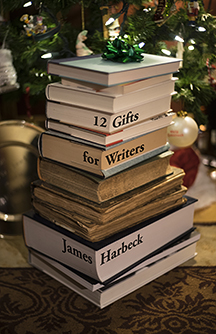Imagine being a young Canadian and first seeing this word on a soup can. What crosses your mind? Probably first of all “That’s a long word” and, immediately, “What the heck is that?” Could it be some weird ingredient like gumbo, or weirder, like mongoose or alligator or tadpole? Or some creature from Dr. Seuss’s If I Ran the Zoo? A check of the ingredients reveals nothing as exceptional as the name: just some meat, some vegetables, some spices, stuff like that.
So it must be some kind of eponym, perhaps? (I’m sure every Canadian youth knows the word eponym. If by every you mean “no”.) It does look like a Scottish or Irish name. Maybe this soup is what they serve at St. Andrew’s in the clubhouse to anyone dressed in tawny clothes who has taken a mulligan. Or is it a magic word uttered by the witches in Macbeth – something on the line of alakazam but with the duller, rounder sound reminiscent of the rumbling in a sheep’s gut, or in yours after an excess of haggis? Maybe it’s a place, like the Mull o’ Kintyre. It kind of has the sound of some burbling bog, actually.
But if you’re mulling a getaway to the home of mulligatawny, cold muddy bogs are not on your itinerary. Rather, take your tiger repellant. This word is another hangover of the British Empire. Tony Aspler, the noted wine critic, once wrote about how England has “phantom Raj syndrome” – they no longer run India, but they still eat curry by the bucket (or the takeout container). This soup is a product of the British domination of India; it’s a contact food – it came to being due to the contact between the British and the Indians. It is indigenous to India in the same way as a child born in India of an Indian parent and a British parent is. It’s a gastronomic creolization (but not what in gastronomy is called a creole), like South Africa’s bobotie.
The British, you see, particularly the officers and various other moneyed sorts, expected a soup course at their meals. Indians did not do soup courses. In fact, Indian food is normally served all at once, not in courses, and the soups they had – or the closest thing they had to soups – were really sauces to pour over rice or plain curries. So something was come up with. More than one something, really, but in Madras (now on maps as Chennai) this soup – or its progenitor – was come up with, and it spread as readily as that other great Raj invention, the gin and tonic (a palatable way of taking your quinine).
The something up with which they came has a lot of variations, it should be said. It usually has meat, and a yellowish colour, and a curryish flavour; there are normally onions in there somewhere. Expect a mixture of ingredients as heterogeneous as the mixture of letters in mulligatawny: humps, cups, lines, curves, rings, crosses and angles, and a dot. The mulligatawny I have in my fridge right now – I made it on the weekend and we will continue to consume it for a couple more days – contains chicken breast, chicken stock, onions, garlic, carrots, potatoes, red lentils, an apple, a chili pepper, an assortment of spices, and coconut milk. It’s yummy. But you could buy a can of soup labelled Mulligatawny and encounter something as different from mine as Richard Mulligan is from Tawny Kitaen.
Still, it will have at least a little pepper of some sort in it, one hopes, if only for the rectification of names. Etymology is no guide to current meaning, but your enjoyment of the soup and its name may still be seasoned a bit more by the knowledge that it comes from Tamil milagu tanni, “pepper water”. The word, like the food, has been adapted; it remains fairly close to the original, but it has been given a sort of bluff British officer’s walrus moustache and a touch of the throat-clearing “harrumph.” In fact, it’s an excellent word for evoking a moneyed British accent. Try it aloud and see for yourself. Then have a bowl of the stuff.






Speaking of words from Indian languages imported into English, I happened to look back at ‘365 words for drunk’ to see how the list was doing. And I wondered whether ‘pie-eyed’ comes from the expression piye huye, contributed by Anand. The first occurrence in print of the English term is in 1904, so it would have arisen in the late 19th century, when the flow of Indian words into English via the Raj was in full spate.
An interesting speculation. Must do some digging.
I also need to top off that list. I think I’ve gotten enough extra feedback now, but I’m not sure where I put it…
I didn’t know ‘pie-eyed’ can only be traced back as recently as 1904?
You could compile lists of Indian words that have made their way into English via the Raj and The East India Company colonial times eg.:
bungalow
chutney
curry
dinghy
jungle
kedgeree
shampoo etc.
I was surprised to see the word ‘navy’ included on a list of words with possible Tamil derivation?
Before Norman French gave us our Latinate ‘navie’ Old English had æschere, scipfierd and sciphere (depending on whether you’re the invader or invadee) for navy, naval force and in Welsh navy (llynges) is an alteration of llong (ship) which itself is derived from Latin ‘navis longa’ – long ship.
The -aw- in ‘mulligatawny’ is due to the fact that British officers in India tended to employ Pathans as their personal servants, from whom they acquired a Pathan accent in their pronunciation of words from any Indian language. They would talk about the ‘Punjaub’ and even spell it like that, and the capital of Afghanistan was pronounced as ‘Kawbul’.
Pingback: Mulligatawny | Convivium